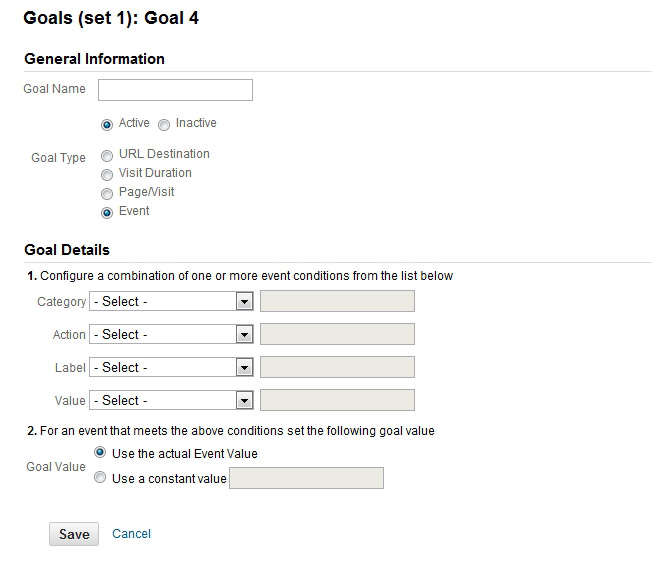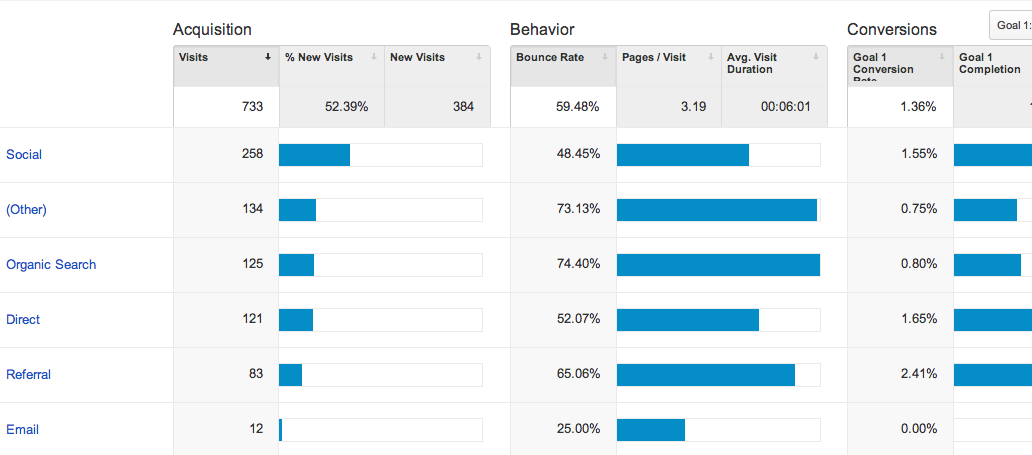What Data Is Google Analytics Goals Unable to Track: Discover the Limitations
What Data Is Google Analytics Goals Unable to Track: Discover the Limitations
Blog Article
Discover the Limitations of Google Analytics Goals: Unveiling the Information Types That Remain Untrackable
As services progressively count on data-driven decision-making, recognizing the restrictions of tools like Google Analytics becomes paramount. While Google Analytics Goals deal important understandings right into customer communications, there exist data types that avoid tracking, presenting obstacles to a comprehensive understanding of individual actions.
Incomplete User Journey Tracking
Incomplete customer trip monitoring within Google Analytics can impede the capacity to properly assess user habits. When the individual journey is not completely tracked, there are gaps in the data that stop a detailed understanding of exactly how individuals engage with an internet site. This lack of understanding can cause missed chances for optimization and renovations to the customer experience.
One usual concern with incomplete individual journey tracking is the failure to see the full path that customers take in the past completing an objective or leaving the website. Without this details, it is challenging to recognize where individuals might be experiencing barriers or rubbing points that prevent them from converting. In addition, insufficient tracking can obscure the impact of particular advertising and marketing initiatives or internet site adjustments on individual behavior.
To address this restriction, it is crucial to establish correct tracking devices within Google Analytics to record the whole customer trip. This may include establishing up occasion tracking, objective funnels, or using tools like Google Tag Manager to make sure that no crucial interactions go unrecorded. By obtaining a thorough sight of the user trip, site owners can make more enlightened decisions to boost individual engagement and drive conversions.
Acknowledgment Challenges
Browsing through acknowledgment obstacles in Google Analytics calls for a detailed understanding of exactly how various touchpoints add to the total conversion procedure. Attribution obstacles occur from the intricacy of modern client trips, where customers communicate with numerous networks before converting. Google Analytics supplies various attribution designs like initial touch, last touch, and linear, each providing a various viewpoint on just how credit history is appointed to touchpoints along the conversion path. Nonetheless, these models may not constantly properly reflect the true effect of each touchpoint on the conversion.
One typical acknowledgment difficulty is the trouble in associating conversions to the proper resource, particularly in situations where users connect with several channels before converting. This can cause inaccuracies in figuring out which advertising and marketing initiatives are driving the most conversions. Additionally, cross-device tracking postures an additional attribution challenge, as users typically switch between tools throughout their journey, making it testing to track their communications effortlessly. Online marketers should very carefully assess and analyze acknowledgment information to make educated choices and optimize their marketing approaches properly.
Offline Conversions
Provided the challenges connected with connecting conversions precisely in online networks, the measurement of offline conversions provides a significant possibility for marketing professionals seeking a much more thorough understanding of their customers' trip. Offline conversions describe actions that clients absorb the real world, such as making purchases in brick-and-mortar stores or over the phone, participating in events, or engaging with published materials - what data is google analytics goals unable to track. These conversions are crucial for services that run both online and offline, as they offer beneficial insights right into the performance of advertising projects throughout different touchpoints
Tracking offline conversions commonly positioned a find substantial challenge for online marketers, as it was testing to link these actions back to specific online interactions properly. With improvements in modern technology, such as the assimilation of CRM systems, one-of-a-kind identifiers, and promo code codes, organizations can currently connect the space between online and offline information to obtain an extra alternative view of customer actions. By properly determining offline conversions, marketing experts can maximize their methods, assign resources more successfully, and eventually improve the general customer experience.
Cross-Device Tracking
Cross-device monitoring plays a critical function in recognizing the interconnected nature of customers' digital communications across numerous gadgets. In today's omnichannel globe, where individuals perfectly switch over in between desktops, tablet computers, and mobile phones, tracking their habits throughout these gadgets is vital for marketers to acquire a comprehensive sight of their consumer journey.

Additionally, personal privacy worries and regulations such as GDPR and CCPA have additionally challenging cross-device monitoring. With users demanding even more control over their information and enhanced limitations on monitoring modern technologies, marketing professionals must find privacy-compliant and ingenious ways to link individual communications across devices.
Dynamic Content Engagement
Recognizing individual engagement with vibrant material is crucial in maximizing electronic advertising and marketing approaches for improved target market interaction. Dynamic content refers to web site aspects that alter based on customer habits, preferences, or other factors, providing an individualized experience. Tracking user communications with dynamic content postures difficulties for standard analytics tools like Google Analytics.
While Google Analytics can track standard interactions like clicks and page sights, it may have a hard time to catch more nuanced involvements within dynamic content. what data is google analytics goals unable to track. Metrics such as time spent on particular dynamic elements, hover actions, or communications within pop-ups are often not easily quantifiable making use of typical monitoring techniques. This limitation hinders marketing professionals' capacity to fully comprehend just how users are involving with dynamic material and image source customize their techniques as necessary

Verdict
To conclude, Google Analytics goals have restrictions in tracking insufficient user journeys, attributing conversions accurately, catching offline conversions, tracking cross-device interactions, and determining vibrant material interaction. These restrictions highlight the relevance of discovering added monitoring approaches and tools to gain a more extensive understanding of individual habits and conversions beyond what Google Analytics can supply.
While Google Analytics Goals deal valuable insights into user interactions, there exist information kinds that thwart monitoring, presenting difficulties to a thorough understanding of customer habits.Incomplete individual journey tracking within Google Analytics can prevent the capacity to properly examine individual habits. When the individual journey is not fully tracked, there are gaps in the information that stop a detailed understanding of just how customers connect with an internet site.One common problem with insufficient individual trip tracking is the inability to see the complete course that users take in the past finishing a goal or leaving the website. By getting a detailed view of the user trip, web site owners can make even more educated decisions to boost individual engagement and drive conversions.
Report this page